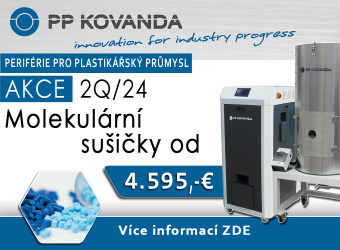GRAFE helps to eliminate problems such as unwanted flow lines at an early stage
Plastics with metallic effects are now an important design element - whether in automotive visible parts, the furniture industry, electronics or household goods. The Thuringian company GRAFE, headquartered in Blankenhain, has extensive expertise in this field.
"We often face the challenge that the customer has a tool available at their site and asks us to deliver a masterbatch with no flow lines. Even though the tool’s design makes it virtually impossible", reports sales staff Thomas Beer.
Therefore, it is important to include the know-how of the color specialist at an early stage. "As a masterbatch supplier, it makes sense to have us on board right from the start of the project and involve us in the configuration of the tool," explains Beer. "Because our experience allows us provide input as early as the sampling stage, the tool and masterbatch can be optimally matched, resulting in a perfect end product", says the colour expert.
Especially when using metal pigments, appropriate technical competence is important. "With our knowledge, we can exchange ideas with the injection moulders and the toolmakers. Using a variety of different methods can help to avoid undesirable effects such as weld lines and separation streaks (colour streaks). These are caused by undercuts and screw domes. In addition, we are constantly working on improved recipes for our masterbatches in order to optimize their flow behavior and achieve better alignment of the flake particles," explains Beer.
Beer has just successfully completed two projects with customers from the automotive sector, in which GRAFE was involved right from the sampling of the tool and was thus able to achieve good results. Beer: "The first project involved the iO injection moulding of interior visible parts on an existing mould with several new colours. Due to temperature differences in the mold, inadmissible deviations occurred. We then adjusted the machine so that we could achieve two different temperatures via two sprues and thus received parts with which the customer was very satisfied."
The second project dealt with a visible component in metal optics. "Despite moldflow analysis, there were unwanted flow lines in the cascade injection-molded part, which originally had seven injection points," explains Beer. "After extensive optimization, our experts advised us to switch to three sprues. In addition, an optimized masterbatch variant with improved flow behavior and ideal directional control of the metal pigments was used, so that the part quality finally met the customer's expectations.
GRAFE at the K2019, October 16 - 23, 2019, hall6, booth E75-E77.
- autor:
- GRAFE Advanced Polymers GmbH


















